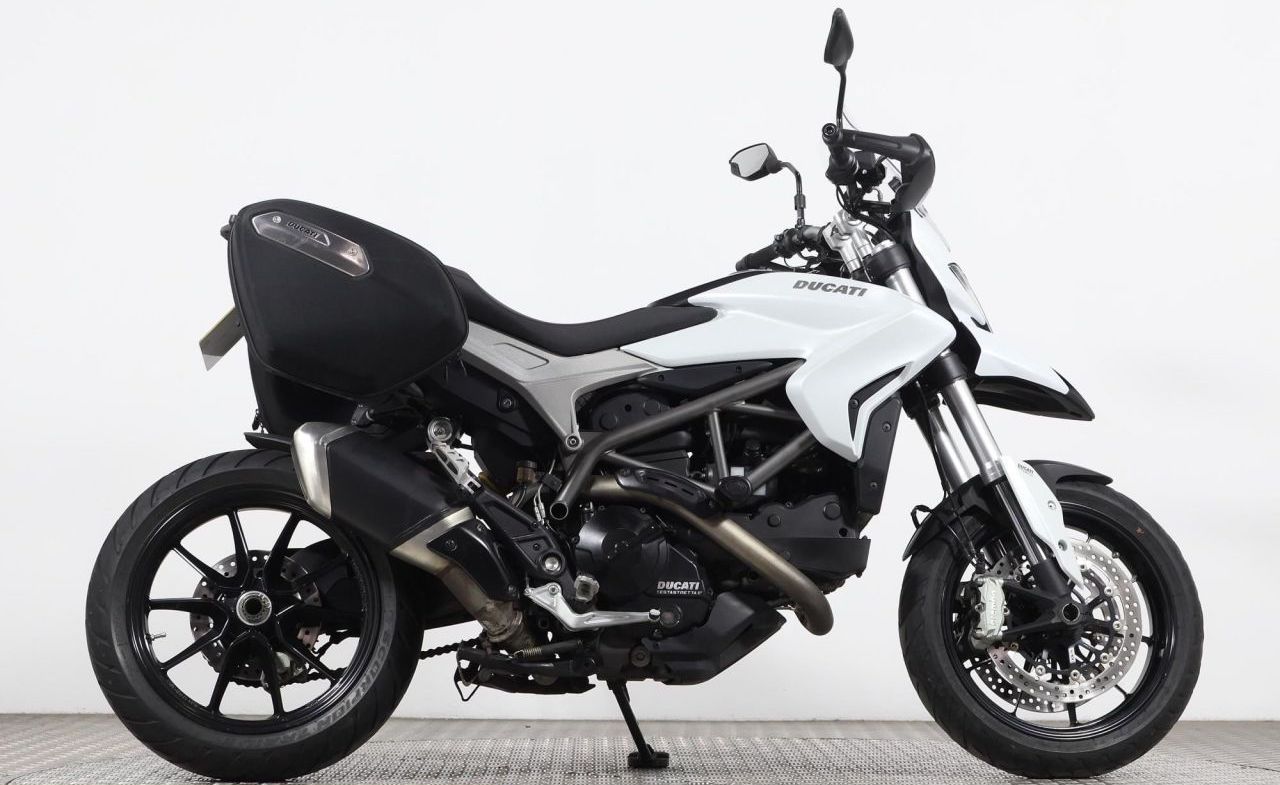20 years of the Ducati Multistrada – a retrospective
This autumn marks the 20th anniversary of one of the most famous and significant biking dynasties of all – Ducati’s Multistrada.

Originally launched towards the end of 2003 as a then fairly conventional air-cooled V-twin all-rounder which stood out instead for its wacky Pierre Terblanche-penned styling, the first 1000DS Multistrada (Italian for ‘multi-road’), was not particularly advanced or dynamic but did sell sufficiently, especially when joined by a higher spec S version, more affordable 620 variant, then the uprated 1100, to live on to decade’s end.
Instead, it was that bike’s successor, the ‘second generation’ 1200 Multistrada launched in 2010, which proved the real ‘game-changer’.
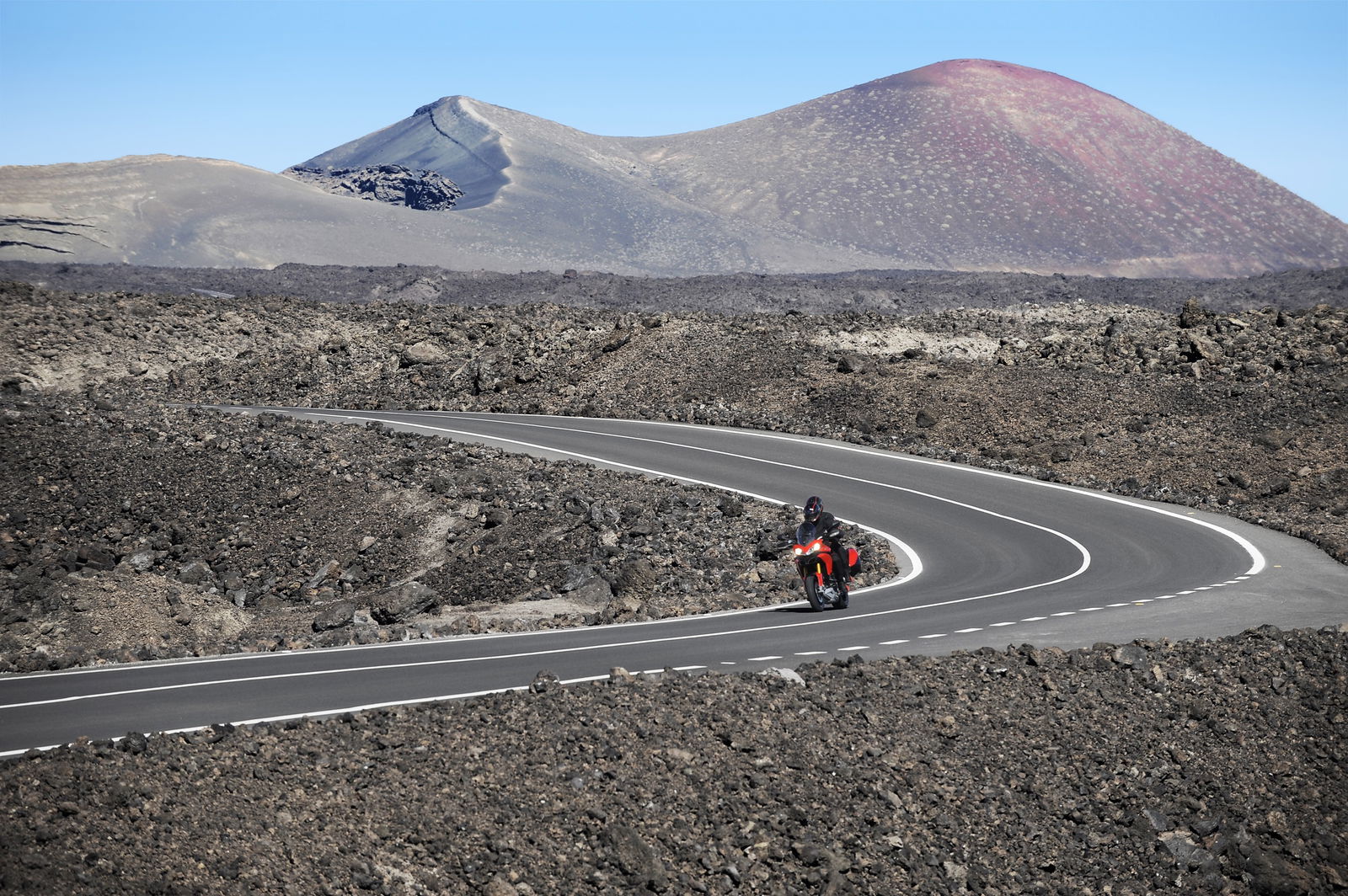
Its world press launch was held in February of that year on the barren volcanic isle of Fuerteventura, an appropriately out-of-worldly location for an out-of-this-world bike. The bike itself, though impressive, didn’t at first seem that radical. An extended technical briefing, which attempted to explain its new ‘four bikes in one’ concept, achieved via the top-spec ‘S’ model’s pioneeringly sophisticated riding modes system which combined pre-set engine maps with appropriate, electronically-controlled suspension and traction control settings, certainly was.
I vividly remember struggling to get my head around it all at a standstill, soon afterwards trying to explain it all in a video for the newspaper I was working for at the time, and then, the next day, being blown away by how intuitive and effective the tech was on our test ride. Biking has never been the same since.
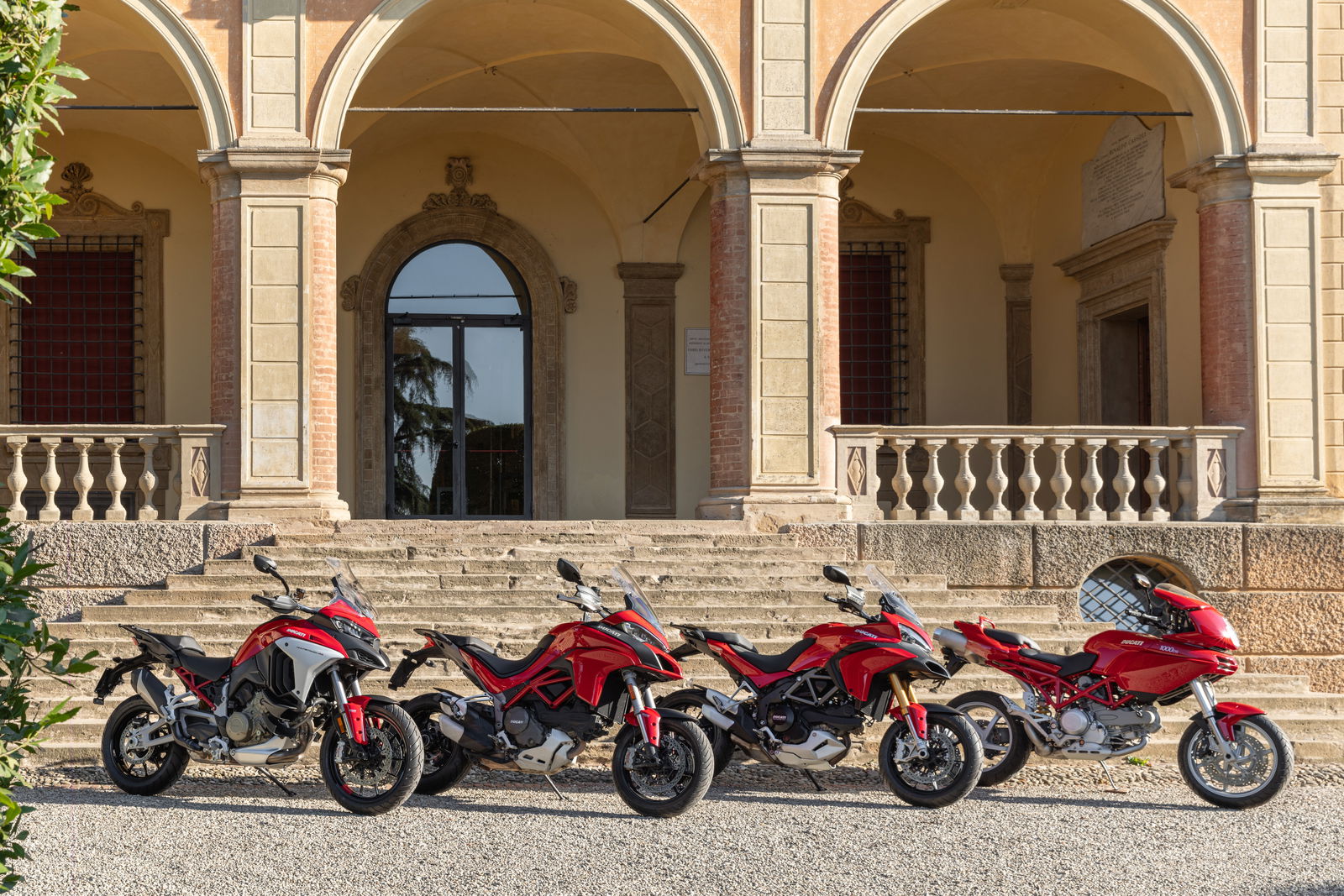
That, however, was also a full, near-14 years ago and the Multistrada has made equally significant advances since. Variable valve timing and semi-active ‘Skyhook’ suspension came with the ‘third generation’ version in 2015, which in turn evolved into the 1260cc model in 2017. While in 2020 another technological leap was made with the all-new Multistrada V4 which ditched Ducati’s traditional V-twin in favour of an all-new, ultra-sophisticated, ‘GranTurismo’ 170bhp V4 while at the same time adding further new tech in terms of front and rear-facing radar to aid cruise control and proximity warnings, ultra-slick TFT dash and more.
Along the way extra model variants have been added to the Multistrada family, its range of abilities, accessories and prices extended all with the result that, today, in late 2023, after 20 years in production and over 100,000 bike sales later, the Multistrada has become not only a motorcycling icon but a byword for technical innovation. But which has been the best? We revisit the landmark Multistrada models in chronological order to find out…
2003 Ducati Multistrada 1000 DS – the ‘first generation’
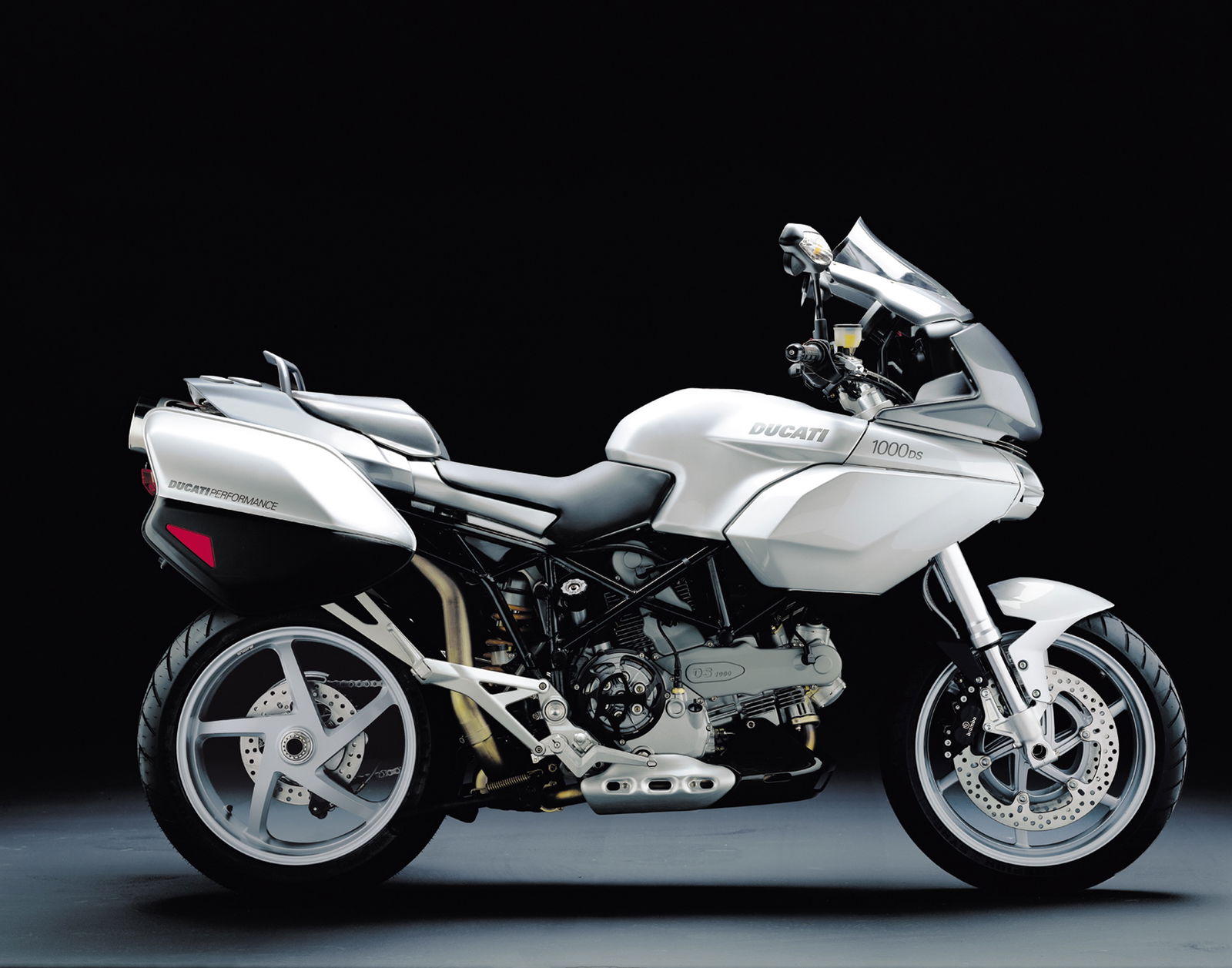
The original Multistrada was a concept machine styled by Pierre Terblanche, based on Ducati’s then air-cooled Monster roadster and Supersports models. It was intended to explore the possibility of delivering sports performance and handling but with a more comfortable, upright, supermoto or adventure bike-inspired riding position. With a conventional 17-inch cast front wheel and single-sided swing arm, it was never intended as an off-roader, even though it took some inspiration from adventure bikes. Best of all, though, with funky styling including twin under-seat exhausts and a novel split fairing where the bottom half was frame-mounted and the top part and screen pivoted with the handlebars, it looked like nothing else, was a Ducati V-twin and promised decent performance, factors which together were enough to create a clamour for it to be put into production.
In reality, although interesting and practical, it was also slightly underwhelming. Its 90bhp was nothing special, the underseat pipes interfered with pillions and luggage and it wasn’t a massive sales hit. But Ducati was determined that it should be the fourth of its motorcycling families, alongside the already existing Superbike, Supersport and Monster, so at Intermot 2004, Ducati added the sportier S version with Ohlins suspension and the smaller, cheaper 620cc variant as the range’s entry model. In 2007 the 1000 was replaced by an 1100cc version.
2010 Ducati Multistrada 1200/S – the ‘four bikes in one’
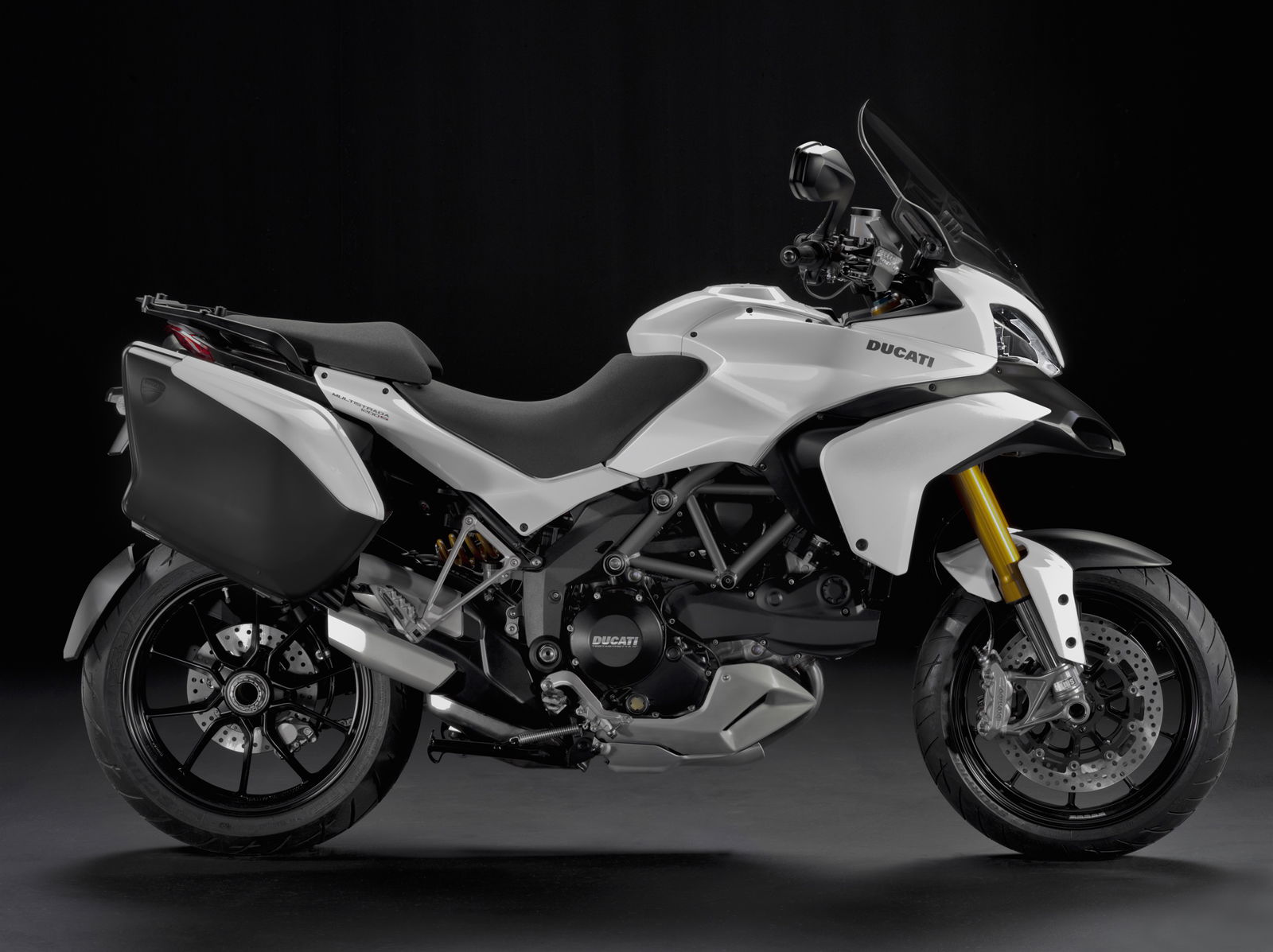
The all-new, second-generation Multistrada arrived in two forms in early 2010 and was a true game-changer which set the Multistrada template for all models to come. First, in terms of raw performance, with its Testastretta liquid-cooled engine derived from that of the 1098 providing 150bhp, it redefined adventure bike performance. Second, its uprated quality and extended service intervals massively enhanced Ducati’s previously fragile reputation for class and reliability.
The biggest news of all was its revolutionary integrated riding modes system. On the base 1200, it was fairly familiar. Switchable riding modes were already known in 2010 and its options of Sport, Touring, City and Enduro maps, with performance altered to suit, was an extension of that. But on the up-specced S model featuring electronically adjustable Ohlins suspension, the bike’s damping was integrated to be adjusted to suit, along with its ABS and traction control settings. Revolutionary? You betcha.
2015 Ducati Multistrada 1200/S – the ‘third generation’
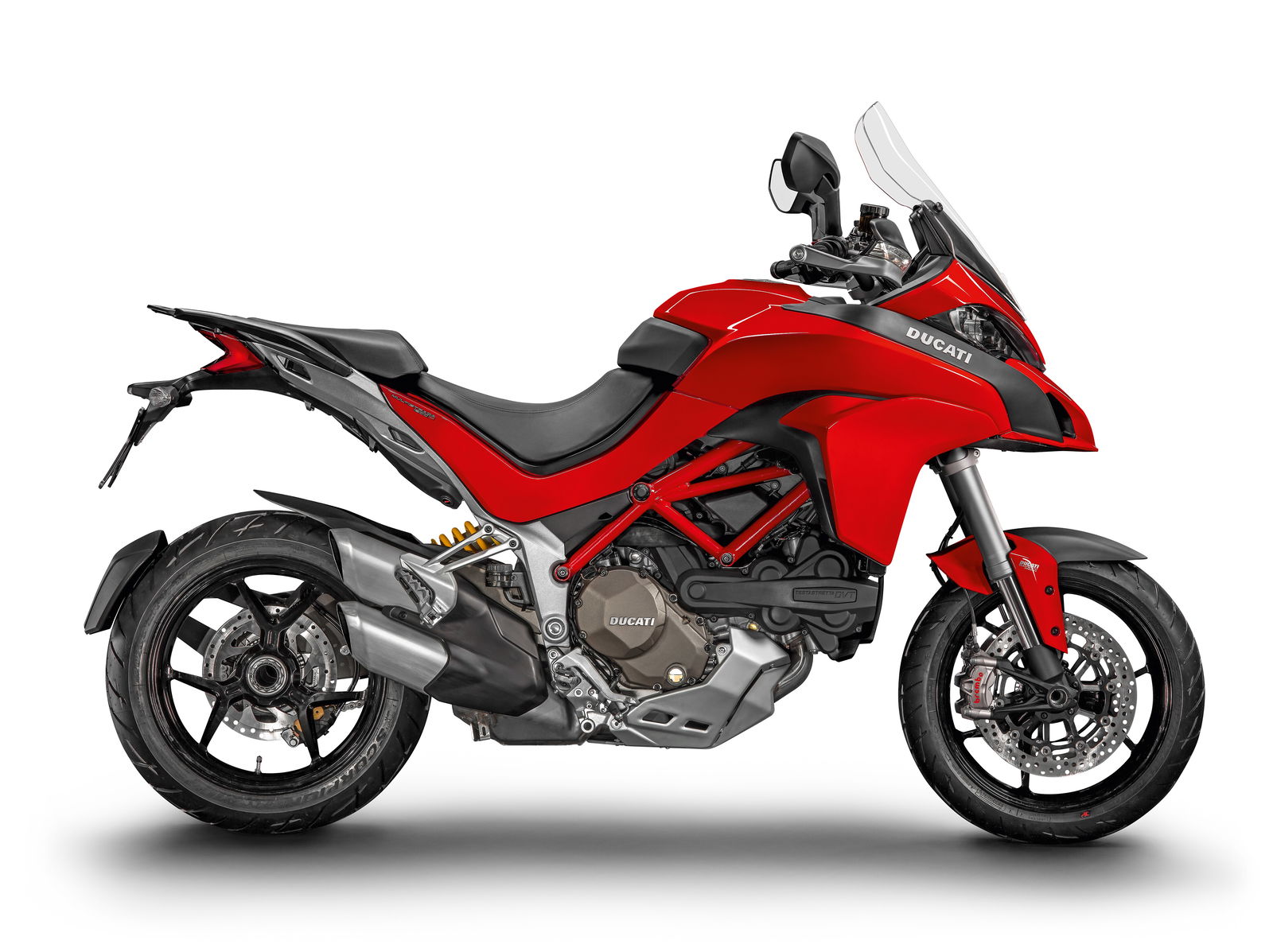
Although the name was unchanged, the third generation Multistrada in 2015 was just as big a technological leap forward as the second had been in 2010. Those advances were two-fold: first, the adoption of a new Testastretta V-twin engine which for the first time featured variable-valve timing on both the intake and exhaust and had the effect of both boosting torque and power, the latter to a peak of 160bhp.
On top of that, this model, in ‘S’ trim at least, also debuted Ducati’s new semi-active ‘Skyhook’ suspension which adjusted automatically according to riding conditions. There was also fresh bodywork, a new dash and uprated switchgear to suit.
Further updates came in 2017 which, although not worthy of being considered a new generation machine, were also significant. Chief of these was the engine being updated to the enlarged 1262cc unit (the bike itself was called the 1260) that had earlier debuted in Ducati’s Diavel performance cruiser. That year also saw the arrival of the first ‘smaller’ Multistrada, the more basic, cheaper, more accessible Multistrada 950.
2021 Ducati Multistrada V4 – the ‘V4th generation’
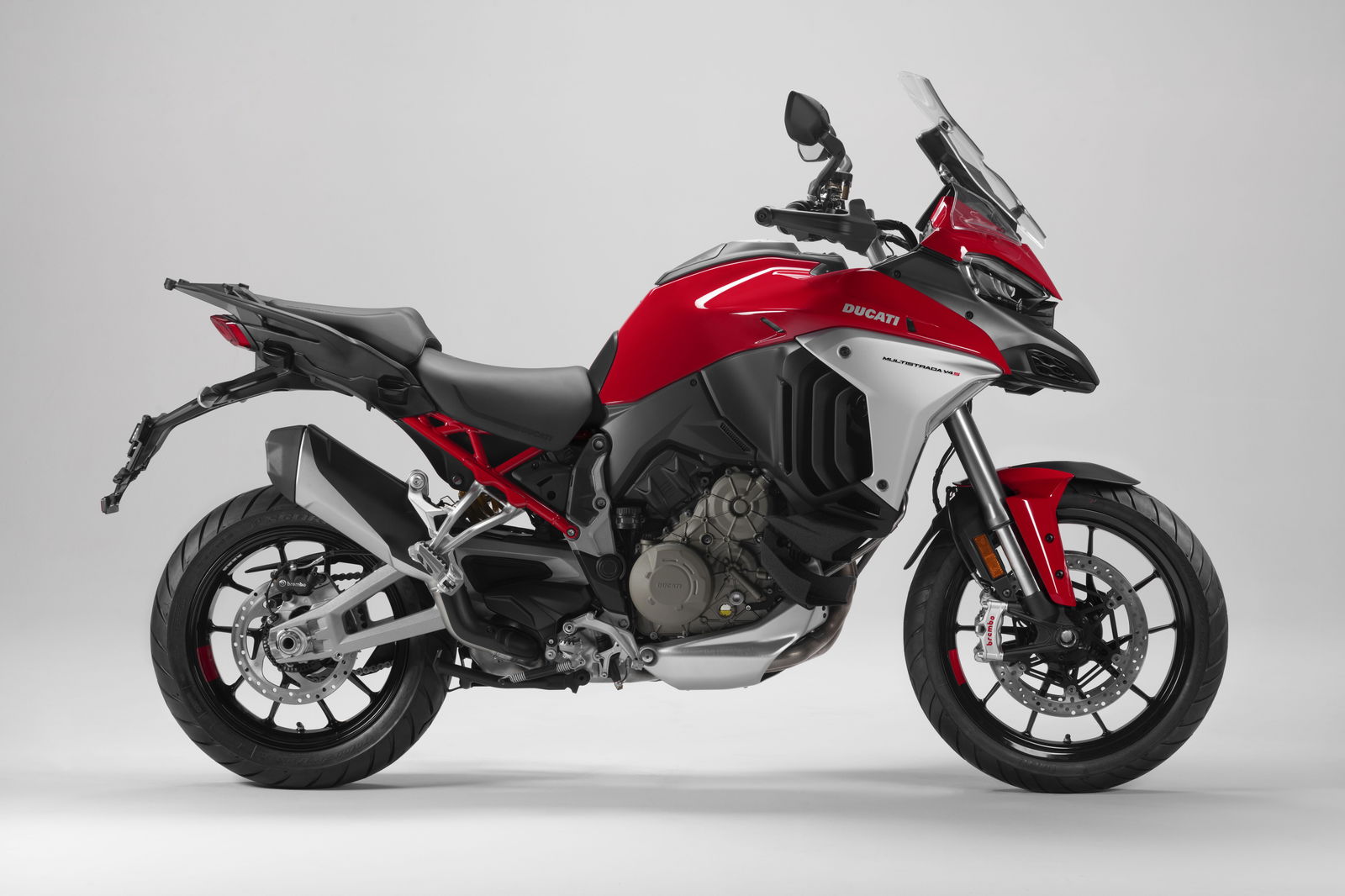
The end of 2020, meanwhile, saw the biggest – and arguably most exciting – changes to the Multistrada so far. An all-new bike based around the ‘GranTurismo’ version of the V4 ‘Stradale’ engine which debuted in 2018’s Panigale V4 superbike, the newcomer boasted not only 170bhp but also a fabulously effective chassis and a simply mind-boggling array of sophisticated technology. So, along with a new, big, colour TFT dash, backlit switchgear, immensely sophisticated customisable riding modes, switchable cornering ABS and traction control, quickshifter/blipper and more, a highlight of the Multistrada V4 was it being the first mass-produced bike to be equipped with two radars - front and rear - which control both the Adaptive Cruise Control, which allows for automatic adjustment of the distance to the vehicle in front, plus Blind Spot Detection, to warn the rider about any vehicles in its blind spots.
Better still than that, however (in my view at least) is the 2023 Multistrada V4 Rally, which adds genuine off-road ability, extra range and comfort to the mix to make it not only the Multistrada that really can do it all (and most accurately live up to its ‘Multistrada’ name) but is also arguably one of the very best bikes currently available, even if it does cost well over £24,000…
